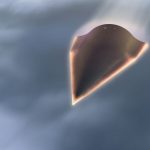
China lands plane on fake island; experts believe fighters, bombers will be next
Friday, January 08, 2016 by usafeaturesmedia
http://www.nationalsecurity.news/2016-01-08-china-lands-plane-on-fake-island-experts-believe-fighters-bombers-will-be-next
(NationalSecurity.news) China has landed a civilian aircraft on one of its manmade islands in the South China Sea as part of a series of tests that will eventually lead to the basing of military aircraft, say experts.
As reported by Reuters, the landing demonstrates that Beijing’s facilities in the hotly contested region are finishing on schedule and that military flights, inevitably, will come next.
According to various foreign officials and analysts, the increasing military presence by China in the region could eventually lead to a Beijing-controlled air defense zone, which would only increase tensions with resident nations in the area that also claim portions of the region, as well as the United States, which has vital economic interests in the South China Sea corridor.
One-fifth of all U.S.-bound trade transits the South China Sea annually; in all, $5 trillion worth of global trade transits those waters.
Reuters noted further:
China has confirmed that a test flight by a civilian plane landed on an artificial island built in the Spratlys, the first time Beijing has used a runway in the area.
Vietnam said the plane landed on Jan 2 and launched a formal diplomatic protest, while Philippines Foreign Ministry spokesman Charles Jose said Manila was planning to do the same. Both have claims to the area that overlap with China.
“That’s the fear, that China will be able take control of the South China Sea and it will affect the freedom of navigation and freedom of overflight,” Jose told reporters.
China has already warned off U.S. and other naval ships and planes in the region that approach its manmade islands, though the Obama administration and the Pentagon have regularly insisted that international law provides freedom of navigation in the region and that phony islands are not the same as sovereign ground.
Still, as the Council on Foreign Relations noted in 2012 that conflict in the area was a real possibility.
“The risk of conflict in the South China Sea is significant. China, Taiwan, Vietnam, Malaysia, Brunei, and the Philippines have competing territorial and jurisdictional claims, particularly over rights to exploit the region’s possibly extensive reserves of oil and gas,” said a CFR Contingency Planning Memorandum. “Freedom of navigation in the region is also a contentious issue, especially between the United States and China over the right of U.S. military vessels to operate in China’s two-hundred-mile exclusive economic zone (EEZ).”
CFR further noted that tensions are being shaped by China’s rising military power and aggressive actions.
“China has embarked on a substantial modernization of its maritime paramilitary forces as well as naval capabilities to enforce its sovereignty and jurisdiction claims by force if necessary,” the memorandum noted. “At the same time, it is developing capabilities that would put U.S. forces in the region at risk in a conflict, thus potentially denying access to the U.S. Navy in the western Pacific.”
Worse, as reported by The Associated Press, as China expands its fleet and as tensions rise throughout the world, the U.S. Pacific Fleet is actually shrinking – a phenomenon that is only adding to the unease of U.S. allies throughout Asia.
Still, “questions about whether the Pacific Fleet has enough resources are more of a reflection of regional anxieties than the Navy’s actual capability, said its commander, Adm. Scott Swift,” AP noted.
Swift said he was “comfortable” with the amount of resources the Pacific Fleet currently has, adding that technology advances make up for a lack of surface vessels and subs.
But others aren’t so sure, as AP reported:
An expert at the Australian Strategic Policy Institute think tank said the issue in peacetime is whether there are enough American vessels to reassure friends and allies and demonstrate U.S. capacity to use power when it needs to.
In wartime, it comes down to whether enough platforms survive missile strikes to carry on their work, Peter Jennings said.
“I think this is emerging as a serious long-term problem,” he said.
The Pacific Fleet consists of 182 vessels; overall, the Navy has 272 warships, including 10 aircraft carriers. That is 20 percent fewer vessels than in 1998.
Reuters noted that China has been building a 10,000-foot runway on Fiery Cross Reef for over a year, so the plane’s recent landing wasn’t a surprise, per se.
“The runways would be long enough to handle long-range bombers and transport craft as well as China’s best jet fighters, giving them a presence deep into the maritime heart of Southeast Asia that they have lacked until now,” Reuters reported.
Some on Congress believe the Obama administration is giving China too much leeway and freedom of operation in a vitally important part of the world.
Sen. John McCain, R-Ariz., chairman of the Senate Armed Services Committee, said the White House should order more “freedom of navigation” patrols within 12 nautical miles of China’s islands.
Military landings on the islands are now “inevitable,” Leszek Buszynski, a visiting fellow at the Australian National University’s Strategic and Defence Studies Center, told Reuters.
“The next step will be, once they’ve tested it with several flights, they will bring down some of their fighter air power – SU-27s and SU-33’s – and they will station them there permanently. That’s what they’re likely to do,” he said.
Sources:
Tagged Under:






